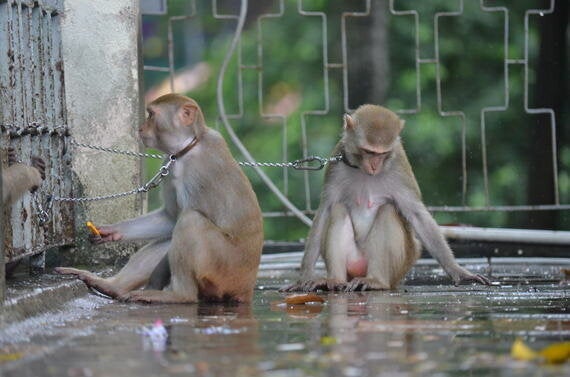This isn't a blog asking people to boycott all animal shows, performances or presentations in zoos or aquariums. There are plenty of those already out there advocating that they are cruel and outdated, and rightly so in many occasions. The exploitation is evident when monkeys are made to ride on horseback, elephants pivot on platforms or tigers jumping through hoops of fire. There is a lot of evidence to show that animals suffer, just so we can see them perform for us.
So why not a boycott? Well, the types of animal "shows" and different species used in them is vast and we can't categorically say that all are bad for animals. But how do we know which performances are good for the animals and which are not? How do we tell if a sea lion is "enjoying" her performance, or if a bird relishes flying around an arena, or if a tiger enjoys hunting "prey" on cue? How do we know if an animal is treated fairly, provided appropriate conditions outside of the show arena or trained with respect and patience? The points listed below should help identify warning signs that an animal show is probably not a positive experience for the animals involved.
1) If it looks unnatural, it probably is
This is an easy one. If an animal show looks unnatural it's usually a good indicator that the animal isn't having fun. Animals don't wear clothes, orangutans and bears don't usually hang out together, macaques don't ride bikes in the wild and bears don't jump through hoops. Wild animals don't like being touched by multiple members of the public. These shows demonstrate a lack of respect to the animals involved and are far from educational.

Photo (Authors Own): Entertainment such as this is exploitation
2) Repetitive natural behaviours aren't always a good thing
It's easy to see why asking an animal to ride a bike is wrong, but what about if the behaviour is natural and seen in the wild - does that mean it is positive for the animal? In the wild an animal can choose to carry out that behaviour, in a show it is often limited to one decision, to take part or not. This decision differs from having the choice of a wide range of opportunities, opportunities which are removed within a show setting. If the show uses the same animals repeatedly throughout the day and involves repetitive behaviours, consider whether you think the animals would prefer to perform the same behaviours repeatedly or choose what and when they do things within the confines of an enclosure instead.
3) If choice is taken away
Similar to the issue above, but when the choice to leave the stage is removed. To give an example, some animals enter the stage/theatre/show arena from one entrance and must leave by another. Binturongs walking along a rope, birds flying from one perch to another. They must carry out a certain activity to enable them to leave or move around. The animal cannot choose not to enter and cannot choose to leave from any other exit. Even if they don't "perform" they have no choice to take part in some form. A good animal show will consistently monitor an animal's welfare and assess whether that animal should take part in a show dependent on its current welfare state.

Photo (Authors Own): Animals should be able to choose whether to take part in animal shows
4) If there are animal welfare concerns in other parts of the zoo or aquarium
How good does the rest of the zoo or aquarium look? Are you concerned about other animals in the zoo? Do their cages look small and/or uninteresting? Are social animals being kept in solitude, or is there indication of over-crowding? Can you see any obvious injuries or animals that are in poor condition? Is there a lack of keeping staff working with the animals? If the answer is yes to any of the above, it can be a strong indicator that animal welfare is not a priority and that any care, training and conditions for animals in shows will be really poor.

Photo (Authors Own): If there are concerns for other animals in the zoo or aquarium, its a strong indicator animal welfare is not a priority.
5) If you wouldn't easily see the species in the wild
Some species are naturally anxious or shy. Others are nocturnal or arboreal, preferring to come out at night or stay high up in the trees. These species are not suitable for noisy, crowded shows as they will suffer a higher degree of anxiety and stress than others.
6) If you don't learn anything
Animal shows are supposed to be educational. What did you learn at the last show you watched? Even if there was a keeper or entertainer speaking while the animal performed, were you too involved with watching the spectacle of an animal leaping in the air that you didn't listen or learn anything? Or were there no educational messages given? At the very least, shows should include conservation messaging and preferably specific species details on an animal's care and needs.
7) If it makes you feel uncomfortable
How did you feel when you last watched an animal show? If watching an animal made to carry out unnatural and silly acts makes you feel uncomfortable, I propose that this would usually mean that the animal is as uncomfortable as you. Instead, opt for zoos and aquariums that provide interesting keeper talks or activities that don't involve live animal handling or shows, demonstrating a clear commitment to their animal's welfare.